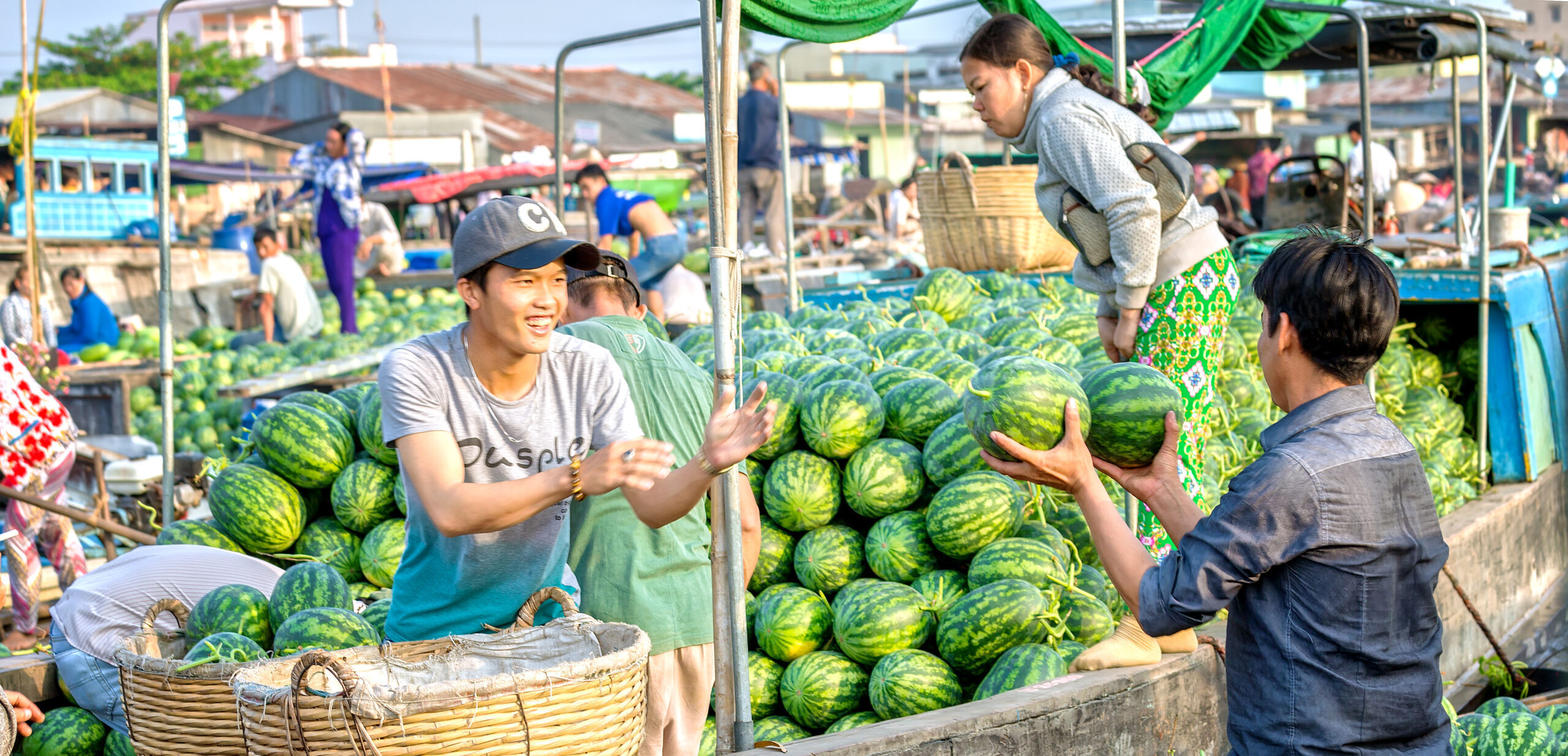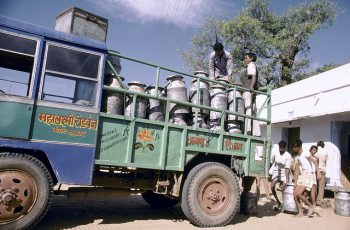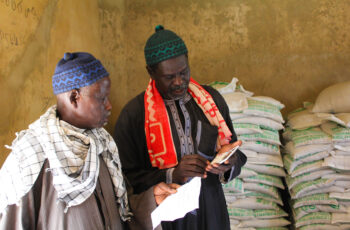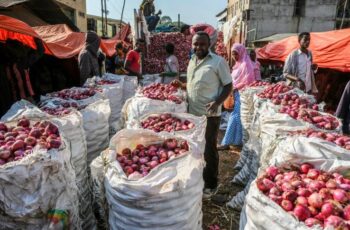Incentivizing Higher-Quality Agricultural Outputs
ATAI Evidence Synthesis Discussion

Photo: Huy Thoai | Shutterstock.com
Despite making investments in technologies and practices to improve the quality of their products, smallholder farmers in low- and middle-income countries do not often receive higher prices for their higher-quality agricultural goods. Disorganized markets with many intermediaries may make quality certification of goods more difficult, thus causing missed opportunities for consumers to eat better and producers to earn higher profits.
This page summarizes ATAI’s policy bulletin on incentivizing higher-quality agricultural outputs. It was written by ATAI staff, and originally published on the J-PAL website at this link.
Suggested Citation: Abdul Latif Jameel Poverty Action Lab (J-PAL). 2021. “Incentivizing higher-quality agricultural outputs.” J-PAL Policy Insights. Last modified September 2021. https://doi.org/10.31485/pi.3010.2021.
Summary
As incomes rise around the world, consumers, including individual and institutional buyers, become willing to pay for higher-quality food. Despite this shift in preferences, many agricultural markets in low- and middle-income countries are still composed of disorganized supply chains with many intermediaries, who liaise between consumers and producers and, in practice, have little to no incentive to reward quality in agricultural products. If consumers demand quality (e.g., in value for money, size, weight, density, color, and taste), and if farmers are capable of producing high-quality products, then the absence of market incentives can have negative consequences. Systems to grade and certify the quality of agricultural outputs are a promising way to improve consumer and producer welfare simultaneously.
Quality upgrading by producers must be predicated on consumer demand for high-quality agricultural goods and can be achieved through market incentives and the way that farmers are compensated. When consumers demonstrate that they are willing to pay higher prices for what they perceive as a higher-quality good, the market has an incentive to respond, but producers can be trapped in a low-quality-low-price cycle if failures in the market limit the quality-price gradient—a scale that matches quality to the price warranted—that farmers earn. Obstacles to maintaining a quality grading system are related to the way a market is structured, so understanding the incentives of farmers, intermediaries, buyers, exporters, and consumers to uphold or undermine quality incentives is critical to understanding the sustainability of such systems. When market quality gradients are improved, welfare gains will depend on whether farmers simply change the way they grade or judge the quality of existing products or whether they make more fundamental changes to their production process to improve overall quality.
A review of seven studies shows consumers demand quality goods in both urban and rural markets and that price incentives can lead farmers to improve the quality of their outputs in markets with quality grading systems, such as through labeling, weighing, or quality testing. The upgrades were driven by incentives resulting from higher prices for higher-quality goods. However, the benefits from creating a small quality grading system rarely exceeded the certification costs induced by farmers, and no studies were able to measure effects at scale. Disorganized markets, where there were multiple intermediaries and buyers, provided a particular challenge to the sustainability of quality grading due to farmers’ and intermediaries’ need to build a reputation for selling high-quality goods over time.
Supporting Evidence
There is demand for quality agricultural products among consumers, even in rural markets. Consumers can often rely on markets that serve urban and international buyers to use a quality gradient, where farmers or sellers separate products, mirroring consumers’ willingness to pay for quality. Quality signaling can benefit consumers, producers, and sellers by increasing available information and better targeting consumer preferences. For example, in China, urban watermelon sellers were provided quality signaling labels—stickers or laser engraving—to improve their sorting of melons into premium and normal piles. Sellers who displayed the laser label earned about 30–40 percent higher profits from both higher sales prices and greater total sales by attracting more high-end customers through the premium pile without losing sales from the normal pile, but there were no gains for sellers with the sticker label [1].
Three studies [1][2][6] showed that consumers also recognize and demand quality in goods and services procured in rural markets. In Pakistan, farmers who were offered information through access to a mobile phone-based clearinghouse on the quality of bovine artificial insemination and inoculation services boosted their negotiating power with veterinarians, leading to more successful inseminations (an increase of 25 percent) likely as a result of greater effort from veterinarians at lower prices. Information enabled farmers to increase their bargaining power with service providers. To avoid losing paying customers, veterinarians seem to have increased their effort and performed better [6].
Producers respond to quality incentives, adopting new technologies and investing more effort. To meet consumers’ demand for quality, farmers often need to make changes to their production, but adopting higher-quality inputs, like hybrid seeds, fertilizer, and pesticides, and improved practices, like drying, sorting, and postharvest storage, often require an up-front investment in learning. In four studies [2][3][7][8], farmers adopted new technologies or practices to upgrade the quality of their outputs in response to price signals or incentives. In Senegal, farmers invited to receive information about an upcoming market reform to independently weigh and label bags of onions according to their quality were more likely to adopt quality-upgrading practices, leading to substantial gains in income. In addition to weighing bags of onions on a scale, quality was judged according to size, compactness, and rate of deterioration. Specifically, farmers from intervention villages were 9.7 percent less likely to use volume-inducing fertilizer that increased moisture levels in the onion, leading to quicker deterioration, compared to 95 percent of farmers in comparison villages. Generally, they were twice as likely to use locally available quality-enhancing fertilizers relative to 28 percent of farmers in comparison villages. They also engaged more in sorting their onions into high, medium, and low quality before bringing them to be weighed [2].
In responding to the new quality grading system, farmers adopted new inputs and practices, updating their production process to better signal and certify their crop’s quality to traders and take advantage of higher market prices. In fact, after labels were introduced, the price for bags that received the top-quality rating increased by 9 percent. This change in price was primarily driven by traders being better able to identify and sort through onion quality and, therefore, reward higher-quality onions from participating villages with higher prices. Overall, the estimated difference in revenues per hectare between farmers in intervention and comparison villages amounted to XOF 122,793 (US$256.59), a 10.7 percent increase. Even though typical barriers to technology adoption were not present in this context, researchers suggest that quality-enhancing technology adoption was low because of a lack of market incentives for adoption [2].
In India, member farmers of cooperatives who received information and incentive payments of up to INR 2,000 (US$40) for milk with a lower microbial count washed their milk collection equipment more frequently than before the intervention and more frequently than comparison group farmers, thus improving the quality of milk by 0.64 standard deviations. This improvement generated an 81 percent increase in the proportion of raw milk that was suitable for higher-value products, such as cheese or yogurt. In addition to improvements in milk cleanliness, dairy farmers in villages where they knew cooperatives would receive the incentive payments increased their production by nearly 16 percent [8].
In Uganda, maize farmers who received information on best practices for production and had access to a secure buyer at harvest, who paid higher prices, increased their use of high-quality inputs by 60 percent and improved their postharvest practices by 27–60 percent relative to farmers in the comparison group. Profits among program farmers increased by 40–80 percent (US$63–97). Researchers suggest this was driven by increased productivity and increased income from selling a higher-quality product to a secure buyer [3]. Policymakers should therefore support efforts to reduce farmers’ up-front costs in making quality-upgrading investments, ensure farmers have access to markets that will pay for quality, and pay higher prices through scaled, sustainable quality grading systems to assist farmers’ profit growth over time.
Trust and reputation building are important factors in farmers receiving higher prices for quality and securing consistent consumers. Four studies [1][3][6][7] found that trust and credibility played a role in farmers’ decisions to upgrade output quality. Farmers do not often have direct contact with larger or multinational buyers and exporters and rely instead on intermediaries to sell products and share information on new technologies and market factors. However, intermediaries do not always have an incentive to help farmers improve output quality due to lack of stable relationships and trust, especially if quality is costly to observe and because long-term contracts are rarely used in agricultural sectors in developing countries. As a result, quality improvement is not always rewarded and farmers have low incentives to upgrade quality. However, when farmers and intermediaries can build connections and trust, both are more likely to benefit from higher prices, higher-quality products, or farmer loyalty. For example, in Vietnam, jointly training dragon fruit farmers and intermediaries on quality-enhancing technologies created a forum for them to build trust and relationships, leading to higher adoption of the training technologies, more farm investments, and higher prices paid to farmers [7].
In the same study in Uganda, maize farmers were unlikely to see a reward for making quality-upgrading investments in existing local markets in the first season, suggesting either buyers do not value quality entirely or they may rely on their past experiences and offer a price based on the expected quality of a product from a given farmer rather than the actual quality of maize being sold [3]. Two studies [1][3] further suggest it may take time for farmers to develop reputations for producing high-quality products and buyers to update their perspectives on certain farmers’ or sellers’ goods. In the above study in China, prior counterfeiting activities may have reduced consumers’ trust in the quality of watermelons with sticker labels. The researcher suggests that the laser engraving may have signaled a more non-falsifiable quality certification or brand that led consumers to trust the engraving in itself rather than the engraving as it was tied to a specific seller [1]. Policymakers should integrate market-based reputation mechanisms into formal brand protection and certification to build trust among consumers and fortify farmers’ and sellers’ incentives to produce and sell high-quality products.
The costs of making quality-upgrading investments often outweigh the benefits. Disorganized markets with many intermediaries may fail to capture the costs associated with farmers’ investments, thereby affecting the sustainability of quality gains. Smallholder farmers respond to price incentives for quality, but in some cases the market price benefit simply did not exceed the added costs required to produce quality. For example, in the above study in Vietnam, changes in the quality of dragon fruit did not persist beyond the intervention because market prices paid to farmers by intermediaries did not fully adjust to reward the quality produced. To meet market-imposed quality standards, farmers increased the quality and quantity of inputs purchased, but without reliably higher revenue, they could not sustain the costs for quality upgrades [7]. Similarly, one year after the quality labels were introduced into the watermelon market in China, all participating intermediary sellers reverted to pre-study sorting and labeling behaviors because the labels were no longer provided for free and the cost of the laser technology for an individual seller was prohibitive [1].
Even in cases where benefits exceed costs, disorganized markets may lack a central actor who can coordinate quality labeling and prevent intermediaries or buyers from taking advantage of the system. For this reason, partners’ buy-in and continued support of quality-upgrading measures is critical to sustainability. In the above studies in India, Pakistan, and Senegal, changes to the priorities of the cooperative, government, or partner led to a disbanding of new reforms or incentives for quality [8][6][2]. Policymakers should encourage the organization of markets or reform market structures to increase “win-win” scenarios, where intermediaries and farmers gain from higher prices and consumers benefit from quality improvements.
Research has shown that quality upgrading can improve both farmers’ profits and consumers’ welfare, but programs tested to date have not successfully sustained these gains. Therefore, policymakers should consider how to sustainably build, formalize, and scale quality grading and certification systems in their contexts. Researchers have used randomized evaluations to test strategic components of the market; all seven studies [1][2][3][4][6][7][8] demonstrate a strong case for welfare improvements through quality upgrades in agricultural goods. However, none were able to successfully catalyze a sustainable and scaled system of quality grading, certification, and branding. However, all studies concluded that this would be worthwhile if done at a low cost to farmers. As a next step, policymakers should move into full-scale implementation to understand how to build durable and scalable systems, maintain higher prices for higher-quality goods, guarantee prices are passed through to farmers from intermediaries, and ensure higher-quality goods are produced to meet consumer demand.



